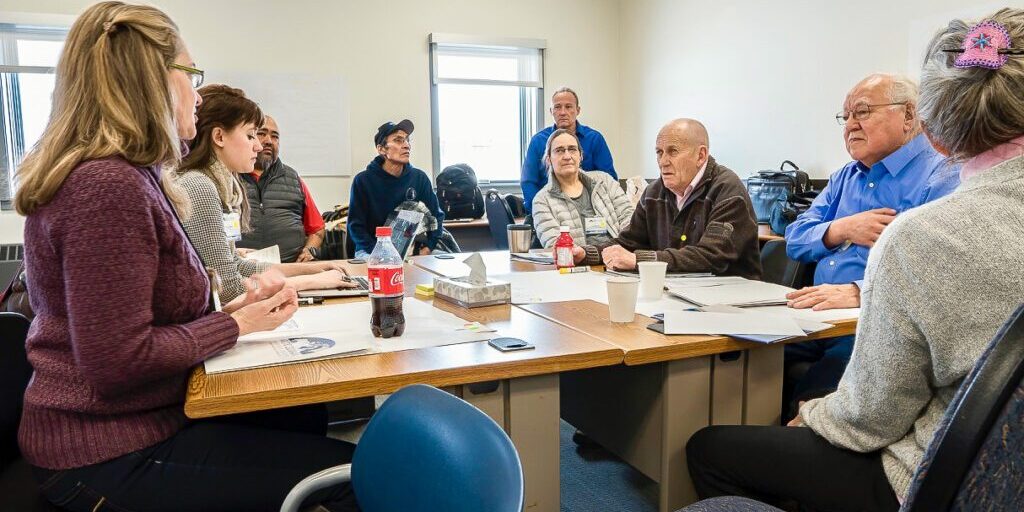“We are now in the time where we are living two lives,” said Don Long at the Nome “Arctic Futures” conference in late March. “One, trying to be a subsistence hunter, and the other one, trying the 8-to-5 type of work that (a) job requires today.”
Long is the former mayor of Utqiagvik (formerly known as Barrow, Alaska’s northernmost community). He echoed a sharp tension long felt by many KNOM listeners: between cherished, traditional lifestyles and the economics of the modern era.
This tension is amplified by changes in Western Alaska’s environment, whether through sea ice loss, erosion, warming temperatures, or human-led resource development, like mining. Some see mining as bolstering the local economy and providing needed jobs. Nome elder Perry Mendenhall told conference attendees that the gold miners in his family “mine to feed their people.” But for White Mountain elder Arlene Soxie, mining transforms the landscape in ways that conflict with subsistence: “It grieves me to see how disrupted our land is. All the digging that was done looks very ugly to me. There are areas where we used to go pick berries, but it’s not available anymore, because the land has been destroyed.”
In a two-day workshop, the fifty Arctic Futures Conference attendees imagined what the Bering Strait and North Slope might look like in twenty years. They considered variables like land erosion and increased marine traffic. What wasn’t in doubt was the resilience of Western Alaska’s people. As Elim elder Robert Keith said, “We’ve always been very adaptable people. We’ve had to live like that. That’s part of our nature. We’re going to survive, but I don’t think some of the places we live at will.”
Another recent Nome conference set attendees abuzz with scientific ideas and proposed solutions to rural Alaska challenges: from recycling and cleaner water to sub-Arctic gardening and reindeer husbandry. The annual Western Alaska Interdisciplinary Science Conference (WAISC) was a three-day clearing house for researchers and locals to learn about a wide variety of scientific and traditional-knowledge subjects.
Image at top: attendees at Arctic Futures. Photo: Kenton Media, used with permission.






